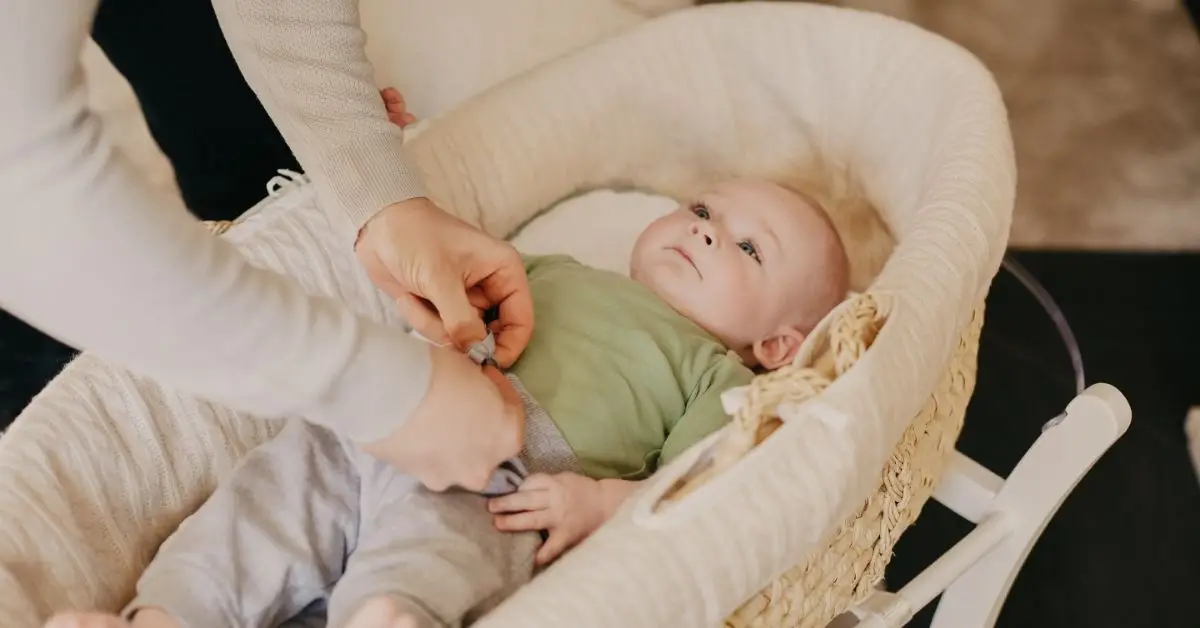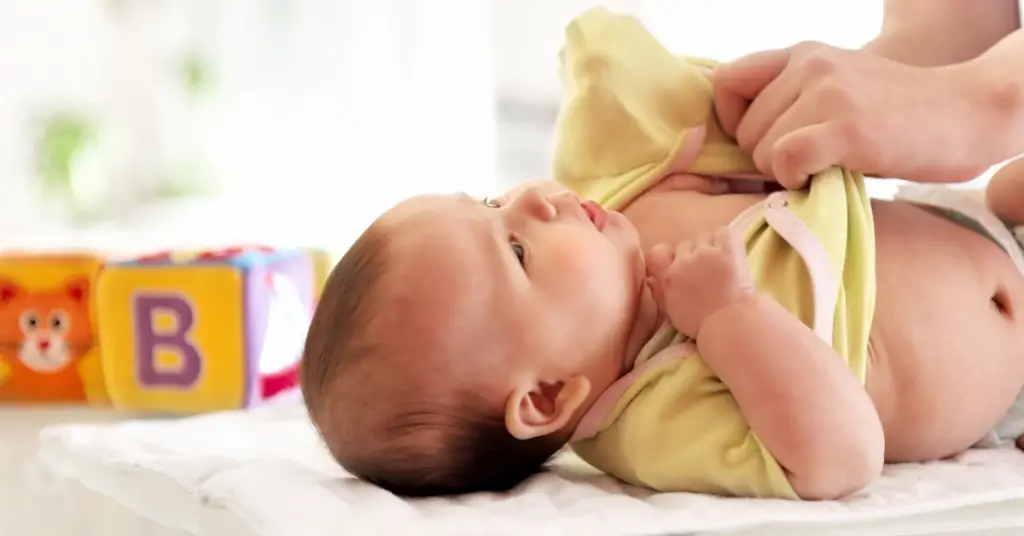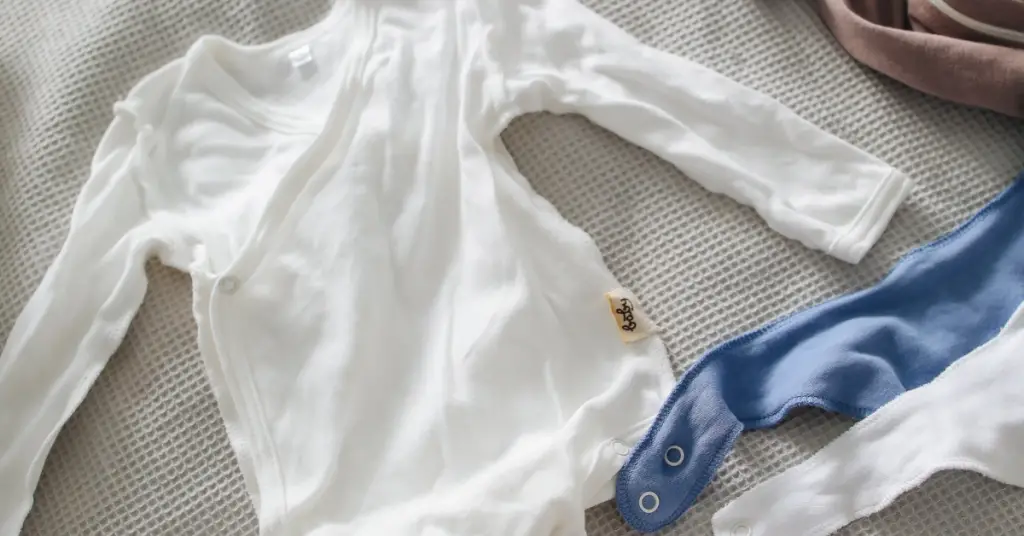The average lifespan of a bassinet is three to four months. Still, your baby’s sleep habits and size will affect how long they can comfortably fit in one.
The products mentioned on this page were independently selected by Babycious editors. As an Amazon Associate, Babycious may earn a commission from qualifying purchases.

How long can baby sleep in a bassinet? The answer to this question is not as straightforward as you might think. How long your baby can sleep in a bassinet will depend on several factors, including the age of your child, their developmental milestones, and the type of bassinet you have.
In this article, we will discuss all aspects that influence how long a baby can sleep in a bassinet safely. We will also provide some tips for ensuring that your child gets the best possible sleep in their bassinet!
How Long Can Baby Sleep in A Bassinet?
You might be asking yourself this question before even getting a bassinet or before even your bundle of joy is here! Well, you will soon find out that babies outgrow their gadgets pretty fast, and bassinets are no different.
The average lifespan of a bassinet is three to four months, but your baby’s sleep habits and size will affect how long they can comfortably fit in one. Bassinets should only be used for babies up to about 15 pounds or until they can roll over on their own, which typically happens around six months old.
However, many factors can affect how long they stay comfortable and safe in their bassinet. Here are three telltale signs that your baby is officially too big for the bassinet.
Sign #1: Your Baby Reaches the Weight Limit of The Bassinet
The first thing we recommend you double-check is the weight limit of your bassinet. You will find this information on the manufacturer’s specifications booklet for your specific bassinet. Bassinets are usually designed to support a weight of 15 to 20 pounds.
If you are unsure about how much your child weighs, we suggest going to an infant scale at their next doctor’s appointment or getting a baby scale to use at home to keep an eye on your baby’s growth.
If your baby is already over the weight limit for the bassinet, then it’s time to start thinking about a new sleeping arrangement. You don’t want them to be uncomfortable or in danger of rolling out of the bassinet and becoming injured.
Sign #2: Your Baby Can Roll Over on Their Own
Rolling over is an exciting milestone for the baby and for the parents! It means that your baby is getting stronger and more coordinated with their movement. And it is one of the first signs of independence!
Rolling over is also a warning sign in terms of your baby’s safety. You don’t want your baby to roll into trouble! It is then the time to stop swaddling and also time for your baby to graduate from the bassinet.
Around six months old, babies will start to become more mobile and may be able to roll over on their own. The most important skill to watch for is when your baby starts rolling from her back to her stomach. If this is the case, then it’s time for them to move out of the bassinet into a crib or another sleeping arrangement that will keep them safe.
Sign #3: Your Baby Is Too Long for The Bassinet
If you have a standard-sized bassinet, then your baby might be too long for it once they reach about six months old. This is because most bassinets are designed for babies who are up to 30 inches long. If your baby is already longer than this, then they will start to feel cramped and uncomfortable in the bassinet.
You will know your baby is too long for the bassinet when he becomes fussy when you try to put her down in her bassinet or if she wakes up in awkward positions as if she were stuck inside the bassinet.
So, when Is Baby Too Big for Bassinet?
It is a combination of the previous factors that will determine when your baby is too big for the bassinet. As a general rule, we recommend transitioning out of the bassinet by six months old or when your baby reaches 15 pounds in weight or when she starts rolling over from back to stomach, whichever comes first!
If you are still unsure about whether or not your baby has outgrown their bassinet, then it is always better to play it safe and upgrade them to a crib.
8 Safety Tips for Bassinet Sleeping
We believe that a bassinet is the safest place you can put your baby down to sleep in in the first months of life! BUT (yes, there is a but), they can be just as dangerous as a crib if not used correctly. Here are some safety tips to follow when your baby is sleeping in a bassinet:
Tip #1: Put the Bassinet in An Open Area
Place the bassinet in an open area of the room and away from curtains or blinds or any cords that could be hanging over the bassinet.
Tip #2: Put Baby to Sleep on Their Back
Always put your baby to sleep on their back for naps and at night. Putting your baby to sleep on their back (also known as the supine position) for every sleep day and night is one of the most protective infant sleeping positions you can adopt.
Tip #3: Put the Bassinet on A Flat Stable Ground
Make sure the bassinet is on flat, stable ground. So that the bassinet is at no risk of tipping over. You also want to have the surface your baby sleeps on as flat as possible, as no inclined surface is safe for your baby’s sleep, especially in the early months.
Tip #4: Check for Recalls
Check for recalls on your specific bassinet before using it. For this reason, we always recommend avoiding second-hand bassinets and purchasing a new bassinet instead that meets the safety standards of the Consumer Product Safety Commission (CPSC). New bassinets always have the date of manufacture on them, and you can be notified of recalls by sending in the registration.
Tip #5: Keep Pets and Toddlers Away from Your Sleeping Baby
Keep your baby away from pets and siblings when they are laying in the bassinet. Some bassinets come with a canopy net like this one. A canopy works great as protection from anything (or anyone) that would interfere with your baby’s sleep.
Tip #6: Keep Your Sleeping Baby Close
Never leave your baby unattended while sleeping. If you need to go to another room, it’s always a good idea to have the bassinet (and your baby) in the same room as you so you can keep an eye on your baby. That’s why a portable bassinet is a great recommendation we have for new parents; they are generally very lightweight and can be carried around easily.
Tip #7: Keep the Bassinet Empty
Do not put blankets, pillows, or stuffed animals with your baby inside the bassinet, as this can pose a risk of suffocation. Bumpers and soft bedding are also frowned upon for the same reason. Instead, you should use a fitted sheet over the mattress, preferably the one that came with it since it has the exact same dimensions as the mattress.
Tip #8: Check the Mattress
The bassinet’s mattress should provide a flat and firm surface for your baby to sleep on. This is an important piece of recommendation from the American Academy of Pediatrics (AAP) in order to reduce the risk of all sleep-related infant deaths.
Conclusion
So, how long can baby sleep in a bassinet? Depending on your baby’s weight, age, and development milestones, they might be able to stay in the bassinet until they are six months old or even longer. But it is important to keep an eye on their growth and development and make the switch when necessary for their safety.
The purpose of this article is informative and educational only. It’s not a substitute for medical consultation or medical care. We do not accept any responsibility for any liability, loss, or risk, personal or otherwise, incurred as a consequence, directly or indirectly, from any information or advice contained here. Babycious may earn compensation from affiliate links in this content.



